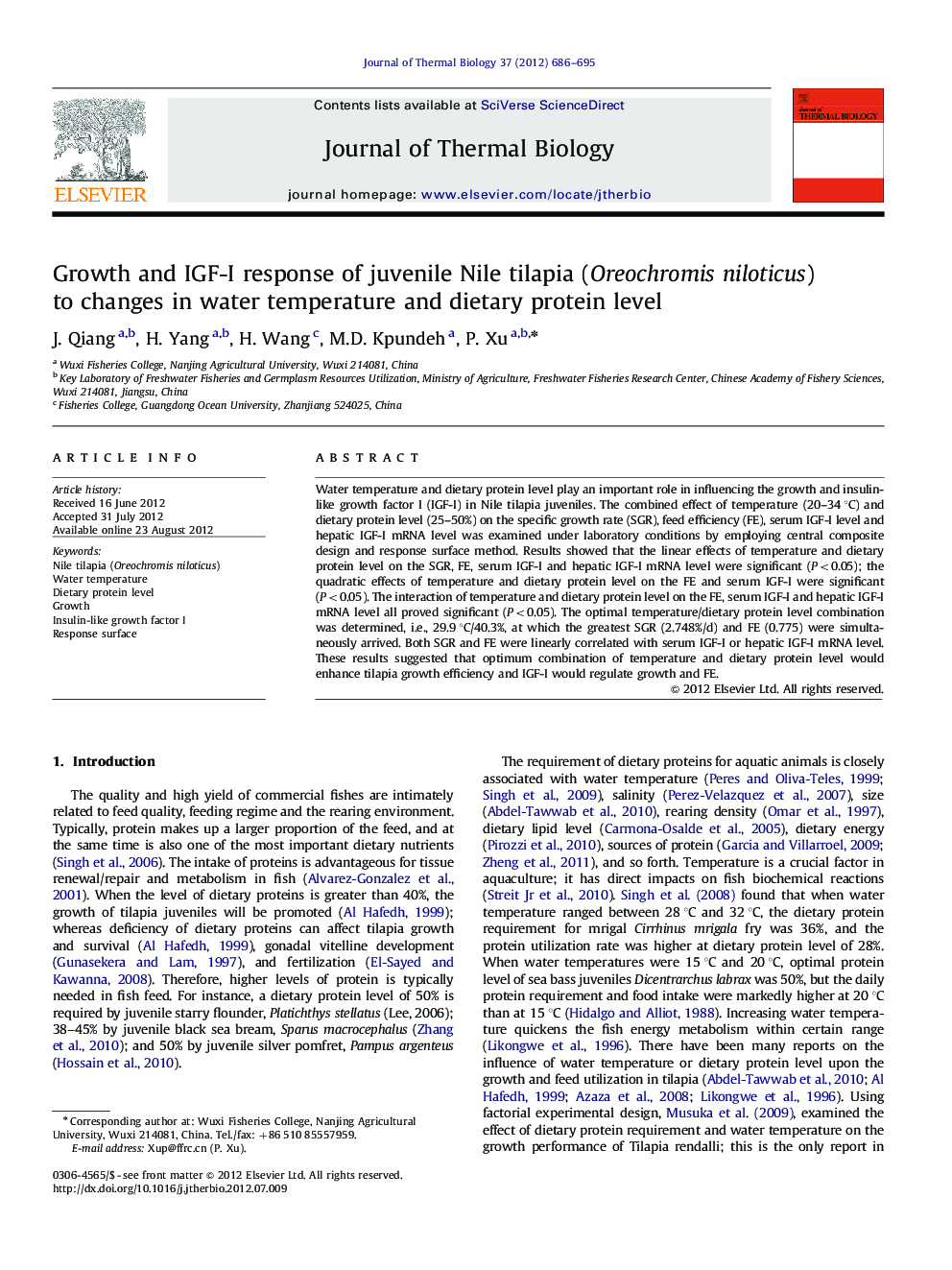| Article ID | Journal | Published Year | Pages | File Type |
|---|---|---|---|---|
| 2843122 | Journal of Thermal Biology | 2012 | 10 Pages |
Water temperature and dietary protein level play an important role in influencing the growth and insulin-like growth factor I (IGF-I) in Nile tilapia juveniles. The combined effect of temperature (20–34 °C) and dietary protein level (25–50%) on the specific growth rate (SGR), feed efficiency (FE), serum IGF-I level and hepatic IGF-I mRNA level was examined under laboratory conditions by employing central composite design and response surface method. Results showed that the linear effects of temperature and dietary protein level on the SGR, FE, serum IGF-I and hepatic IGF-I mRNA level were significant (P<0.05); the quadratic effects of temperature and dietary protein level on the FE and serum IGF-I were significant (P<0.05). The interaction of temperature and dietary protein level on the FE, serum IGF-I and hepatic IGF-I mRNA level all proved significant (P<0.05). The optimal temperature/dietary protein level combination was determined, i.e., 29.9 °C/40.3%, at which the greatest SGR (2.748%/d) and FE (0.775) were simultaneously arrived. Both SGR and FE were linearly correlated with serum IGF-I or hepatic IGF-I mRNA level. These results suggested that optimum combination of temperature and dietary protein level would enhance tilapia growth efficiency and IGF-I would regulate growth and FE.
► The combined effect between temperature and protein level on FE and IGF-I were significant. ► The quadratic effect of temperature and protein level on FE and serum IGF-I were significant. ► We established the models of growth and IGF-I towards the temperature and protein level. ► Both SGR and FE were linearly correlated with serum IGF-I or hepatic IGF-I mRNA level.
